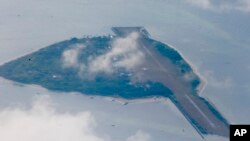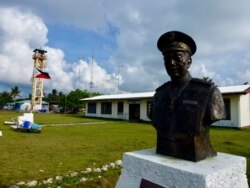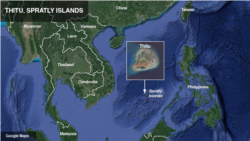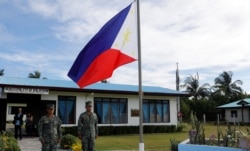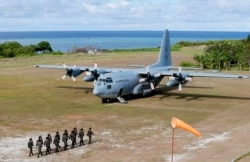A proposal to put tourist hotels on a Philippine islet in the South China Sea could boost Manila's broader maritime sovereignty claim as it tries to hold off its more powerful rival, China, experts say.
Philippine officials may open tiny Thitu Island to hotels for tourists, Defense Secretary Delfin Lorenzana told domestic news media Tuesday. The military aims to improve a runway on the islet by year's end and later build structures for troops plus "maybe some hotels for Filipinos who would like to go there as tourists," Lorenzana was quoted saying.
Thitu, home to about 100 people, would join a tiny minority of the South China Sea atolls, reefs and other land forms that allow public access such as tourism. Countries behind the tourism can strengthen their sovereignty claims by showing actual use of an islet, a criterion sometimes cited in international legal disputes.
"Tourism as I understand it is a form of virtual occupation and a statement of sovereignty, because tourism means that there is legitimization of civilian activity in these so-called contested territories," said Alan Chong, associate professor at the S. Rajaratnam School of International Studies in Singapore. "It's a way of ensuring that these islands will be perpetually occupied."
Pivotal place for Thitu Island
Thitu stands out in the South China Sea today as one of nine Philippine-controlled features in the larger, heavily disputed Spratly Islands chain.
In April, as many as 200 Chinese boats surrounded Thitu, raising alarm in the Philippines before going back out to sea. China took control from the Philippines of another disputed islet, Scarborough Shoal, in 2012.
Brunei, China, Malaysia, the Philippines, Taiwan and Vietnam dispute sovereignty over all or parts of the 3.5-million-square-kilometer sea. The waterway running from Hong Kong to the island of Borneo is valued for fisheries, shipping lanes and undersea fossil fuel reserves.
China, with the region's strongest armed forces, has taken a territorial lead in the six-way sovereignty dispute over the past decade by reclaiming land to enlarge islands for military installations. Other countries resent the expansion, leading to standoffs, negotiations and offers of economic aid from Beijing to the others.
Actual use
The International Court of Justice considers a continual display of authority over a land feature as an effective administrative use of the South China Sea. Other South China Sea claimants have built up islets under their control with this purpose.
Tourism can help establish an islet's "actual use," said Fabrizio Bozzato, a Taiwan Strategy Research Association fellow who specializes in Asia and the Pacific.
"The Philippines will demonstrate what in international law doctrine is called actual control and use of that particular island, so that will corroborate the Philippine claim not only on Thitu but also the nine islands that Manila controls," Bozzato said.
Tourism infancy
Malaysia, China and Vietnam already allow tourism to disputed zones in the sea.
Malaysia began letting tourists visit a diving resort on a Spratly holding called Layang Layang in the 1980s. A former Malaysian naval base there still stands out as the sea's only islet open regularly to the general public, regardless of nationality and without joining a special delegation.
China is developing tourism around Sansha, a 1,000-person city it has built in the sea's Paracel Islands. A cruise ship named the Princess Coconut is planning to make two-day journeys there from the Chinese mainland, booking service Chinatravelguide.com says.
Vietnam offers South China Sea tours to its own citizens.
Transformation for Thitu?
If travel writers discover tourism potential on Thitu, more people could easily follow them and spawn a trend, said Jonathan Ravelas, chief market strategist with Banco de Oro UniBank in metro Manila. "Provide more exposure and then people will start rethinking," he said. "Everything is possible."
Philippine government departments will find it "feasible" to build tourism infrastructure for boats and aircraft on Thitu, said Rajiv Biswas, Asia-Pacific chief economist at the market research firm IHS Markit.
Niche tourists such as divers may catch on, he said, but privately owned tourism operators might not buy into the whole plan.
"It may be harder to convince the developers from the private sector to invest in building hotels, when the profitability of such investments may be much higher in some of the more traditional tourist locations," Biswas said. Investors might see Thitu as "more troubled" compared to the country's numerous other coastal tourism spots, he added.




